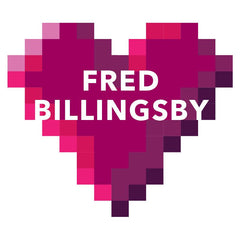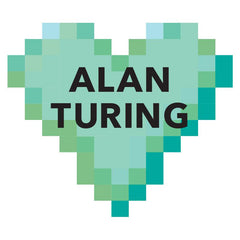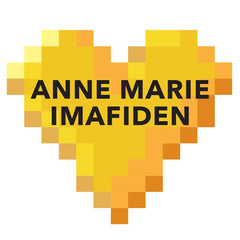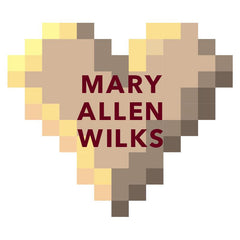We're passionate about these people in tech
We love a list. This is a list of people we love. So you could say that’s a win-win!
This months blog is a celebration of the people who have pushed the boundaries of what’s possible, what’s acceptable in society and what is the right thing to do. We love them all for lots of different reasons. They are all stars in our eyes and here’s why…
We love Wally
Wally Funk has always dreamt of going into space. When NASA finally began accepting women in the late 1970’s, she applied three times. Unbelievably, she was turned down for not having an engineering degree or a background as a test pilot despite her impressive aviation credentials.
It was 1995 when Lt. Col. Eileen Collins became the first woman to pilot a space shuttle into space, Wally was deemed to be too old to qualify. Undeterred in 2012, Wally put money down to be one of the first people to fly into space with Virgin Galactic. The money for the flight came from book and film royalties along with personal savings. But there was not official launch date, so Wally had to wait.

Then last year at the tender age of 82, Wally got to go into space with Jeff Bezos’ space exploration initiative, Blue Origin. She was one of four crew to take the inaugural flight of the 'New Shepard' on July 1st 2022 briefly leaving the earths atmosphere. Wally made history again this time as the oldest person to fly in to space, passing John Glenn's record set in 1998.
Lovelace will always be an inspiration
Nearly 200 years ago Charles Babbage and Ada Lovelace began the modern computer age. Ada was young, somewhere around 17 when she met Babbage, the mathematician and inventor. The pair became friends and worked together on numerous projects, with Babbage acting as a mentor figure.
Ada was fascinated by Babbage's ideas - think of the most outrageous current 'ai claim' you've heard (there are 1000’s of claims being made about ChatGPT and countless other algorithms right now) and multiply it by 100 and that starts to give you some indication of how forward thinking this work was.

But what made Ada so special? Babbage had invented the machine, called ‘the difference engine’, which was meant to perform mathematical calculations. Ada got a chance to work with him, developing the machine, testing it’s capability and exploring the possibilities that it presented.
She was captivated by it, so much so, that when Babbage began work on another device known as the ‘analytical engine’, designed to handle more complex calculations than the first machine, it was Ada wrote code for this machine, creating the first algorithm over 200 years ago!
That still blows our minds to this day. At a time when most industries had not advanced much beyond the horse and cart and basic mechanisation, Ada was exploring code and defining what a ‘computer’ is and more importantly, what it can do.

An arrow but no heart
When two people share a love for a subject, when their skills naturally compliment one another, something really special is created. We're talking about pioneering work that has formed the products that we all use, everyday.
Let's tell you a bit about the people. Doug Englebart - he was an early adopter of the personal computing and an Internet pioneer. He is best known for his work with Alan Kay, also a computer scientist, together they founded the field of human–computer interaction at the Augmentation Research Center Lab at Stanford Research International.
Working together they realised the need for a user friendly software interface - Say 'hello' to the computer mouse. But their contribution went way beyond the graphics and usability that they brought to the world of computing. Doug and Alan also developed hypertext, networked computers and the thousands of graphical user interfaces (GUI) that have followed in their footsteps.
Alan Kay is probably best known for his pioneering work on object-oriented programming, creating the 'windowing' graphical user interface (GUI) design, this is the work he did with Doug. What a team, what incredible achievements.
A star of stage and screen and much more
Hedy Lemarr is a lady that we should all know more about. Why? Well she had three, yes three incredibly successful careers working as an actress, inventor and film producer. Hedy appeared in 30 films over her 28-year long film career. As if that wasn't enough, she co-invented an early version of frequency-hopping spread spectrum communication for torpedo guidance. This tech was used to jam the communication signals of the enemy forces in World War II.
Various spread spectrum techniques are still used today as a part of Bluetooth communications, with similar methods applied and used in Wi-Fi as well. The value of this work wasn't recognised until 2014 when Hedy and fellow inventor George Antheil were posthumously inducted into the US National Inventors Hall of Fame.

Most people would be over the moon to have had a 28 year film career, developed some really useful tech that’s still in use 50 years later, but Hedy Lamarr did more, much more! She also developed aircraft aerodynamics, working with Howard Hughes – originally working with him on film projects, before getting the aviation bug and pioneering the design and construction of planes together. We think that's more than enough of a reason that her name should be better known than it is, what say you?
We love pixels
And so does Fred Billingsby. Who? Read pon, Fred spent most of his career developing techniques for digital image processing, supporting the American space programme to the moon.

In 1965 he produced two papers as part of his work with NASA, where the word ‘pixel’ was used. He was the first person to ever use the term, describing the process of pixilation - the formation of pictures from small squares of data.
Today we use this term every day, it’s common place and we have found it fascinating to know a bit more about where it came from and the person who ‘coined’ the phrase.
We also love a glitch
They come in many shapes and sizes and they’re not always welcome, but they can create some fabulous results. It’s another word that’s commonplace today, but where did it come from? And who’s responsible?
There are a several people who have laid claim to first using it, but our favourite is Bennett Cerf, who on the June 20th, 1965 in an episode of ‘What’s My Line’ said “a kink... when anything goes wrong down there [Cape Kennedy], they say there’s been a slight glitch.”

There’s lots of other dialogue from NASA around this time that backs this theory up, astronaut John Glenn used the term in his section of ‘Into Orbit’, writing “Another term we adopted to describe some of our problems was “glitch.” Literally, a glitch is a spike or change in voltage in an electrical circuit which takes place when the circuit suddenly has a new load put on it.”
John Daily also used the word a few weeks later on the July 4th, 1965, expressing it as a term used by the Air Force at Cape Kennedy, in the process of launching rockets, “it means something’s gone wrong and you can’t figure out what it is, so you call it a ‘glitch’.”
So we think that 1965 was the year of the glitch as by July 23rd, Time Magazine went to press defining the term in an article called “Glitches - a spaceman’s word for irritating disturbances.”
Pride and prejudice
We love Lynn Conway, she has blazed an incredible trail, but it’s not been easy. Academically and professionally she achieved fantastic things, see an earlier blog that we wrote that charts them all here. But personally she was tortured, massively uncomfortable, trapped within a body she didn’t identify with.
Lynn was no stranger to trying something new, she’d done it regularly with her work, could she do it with her personal life as well? She learnt about the pioneering research of Harry Benjamin in treating transsexual women and approached him for help. Under his care, she began her medical gender transition, meeting her husband, Charlie in 1987 and they have been together ever since.
In 1999 computer historians began investigating Lynn’s early research projects at IBM. She knew that it was only a matter of time before she would be “outed.” With her husband’s support, Lynn proactively set up a website that detailed her transgender journey and the real reasons that she left IBM. Within the site Lynn explained many things, but most important to her was a need to “illuminate and normalise the issues of gender identity and the processes of gender transition.”
In 2020, 52 years after IBM fired her, the company invited Lynn to a global virtual event, where they apologised. At this same event, IBM awarded her their Lifetime Achievement Award, a rare honour given to very few people in recognition of those who have changed the world through their technological inventions.
Lynn continued to change the world as a transgender activist, fighting for equal opportunities and employment protection for transgender people. Sadly Lynn passed away in the early summer of 2024.
We love code
And DNA is a code like no other. Understanding it has been pivotal in the rapid creation of vaccines during the Covid-19 pandemic and countless other life saving operations. The structure or code was finally mastered by Crick and Watson in Cambridge, in The Eagle pub of all places.
DeoxyriboNucleic Acid (DNA) was first discovered by Friedrich Miescher in 1869, and it remained something of an enigma for many decades as people could not determine where the secret source lay, many believing it to be within the protein molecules, but no one was able to prove this.
As a result it was nearly a hundred years later before anybody made real progress in breaking this code. In 1944 as a result of the experiments by Oswald Avery, Colin MacLeod, and Maclyn McCarty, who demonstrated that purified DNA could change one strain of bacteria into another. This was the first time that DNA had clearly shown it was capable of transforming the properties of cells. Good progress, but there was still many thing about this enigma that we simply didn't know, or understand.
Nearly a decade later in 1953, James Watson and Francis Crick put forward their double-helix model of DNA, based on crystallized X-ray structures that were being studied by Rosalind Franklin. And as the saying goes ‘the rest is history’, the beautiful double helix structure became understood and has completely changed our understanding of the human body.
Love letters
Three letters that mean everything to us today, w,w,w. The man responsible, Tim Berners Lee, an engineer and computer scientist who is now best known as the inventor of the World Wide Web.
12th March 1989 is the day everything changed! Berners-Lee proposed an information management system that we now call the ‘web’, he then carried out the first successful communication between a Hypertext Transfer Protocol (HTTP) client and server via the internet (that was mid-November of the same year). This demonstration worked and changed the way in which we have communicated ever since.

Berners Lee has been bestowed with so many accolades over the years, but he isn’t sure that we are using the technology in the best ways. As an engineer and computer scientist he wanted to develop a system of communication that was efficient and versatile. What he created was so versatile that it quickly became commercial, without any rules or regulations and 34 years later we are living with the ‘pro’s and con’s’ of the web.
Love numbers
Katherine Johnson is one incredible human being. She worked at the National Advisory Committee for Aeronautics (a forerunner of NASA). Katherine and her mathematical colleagues (mainly women) set the standard for the mathematical calculations needed to successfully launch, land and return rockets to the moon.
Katherine was ahead of her time in so many ways and life was often hard for her, she was subjected to prejudice throughout her life. As an African American woman working in a male dominated environment she was subjected to both segregation and gender inequality, but she didn't let that stop her, she continued her work and became a pivotal part of the space programme.

Her talent for calculating projectories, launch windows and emergency return paths for spacecraft saw her being extremely highly regarded. For example, when computers were used for the first time by NASA to calculate John Glenn’s orbit around Earth, he refused to fly until Katherine had verified the calculations the computer had created were correct. We just love that, and love Katherine, what a talent, a pioneer and powerful force for equality.
Decoding messages
Algorithms and 'ai' are a huge part of our digital lives, they’re used to make our experiences feel natural. They have been with us for a lot longer than many people think, originally developed by Greek mathematicans and most famously used by Alan Turing in World War II.

Turing is now widely recognised for his achievements at Bletchley Park, where as a mathematician, computer scientist, logician, cryptanalyst, philosopher and theoretical biologist he was influential in the development of theoretical computer science. He formulated the concepts for algorithm and computation, building the Turing machine, which is generally considered to be the first multi-purpose computer.
Today Turing is considered to be the father of theoretical computer science and artificial intelligence. His work undoubtedly changed the direction of travel during the war and his legacy remains ever present in the algorithmic experiences of today.
Like many of the people we are sharing a love of, Alan Turing’s personal life was undeniably difficult, being forced to take drugs that would prevent him following his natural desires. He bravely followed the path into the unknown, remaining true to his identity, something which cost him everything. His steadfast resolve and undeniable talents make him all the more admirable in our opinion.

Spreading the love
Anne Marie Imafidon is the founder of Stemettes, an association that promotes women in STEM (science, technology, engineering and mathematics) careers.
Born in 1990 and the child prodigy of computing, maths and numerous languages at school, she became the youngest-ever graduate with a master’s degree at the age of 19!
Stemettes has worked with over 50,000 young people across Europe, helping Anne-Marie pursue her dream of a more inclusive and diverse STEM industry. 2023 marks the 10 years of Stemettes, which is a massive achievement and we hope this fantastic work will continue to attract more women into tech roles around the world.

Digital connections
We love making connections, today many of those connections are made online. We have a huge 'thank you' to say to Mary Allen Wilkes for helping make this possible. Wilkes is best known for her work on LINC - considered by many to be the world’s first personal computer.
In 1964, she worked from her parents’ home in Baltimore using a LINC, making her a serious contender for the title of “the first person to work remotely using a computer”.
A bit of further back ground, Mary Allen was one of the first female computer scientists, working at MIT and when she joined the Digital Computer Group she began to develop the LINC (Laboratory Instrument Computer) programme working with Wesley A. Clark and Charles Molnar. Mary Allen wrote the original LINC programming manual and taught the early adopters of the LINC - which allowed you to network computers and send messages.

February is a funny month
Not in a laugh out loud way, it’s an outliner, shorter than all the others and in the northern hemisphere it’s a time of transition, where winter slips back after the dark days of January and after effects of the party season.
There’s also this weird thing called Valentine’s Day, the epitome of consumerism, where we are told to buy things as an expression of our love for someone. We don’t believe in buying, or trying to buy affection, but we would like to celebrate some really cool people, so that’s what we’ve done.
This list
There are countless other people that we haven’t included here, not that their achievements are any lesser respected, appreciated or note-able. You may have noticed that we’ve also intentionally not numbered them, it would have been incredibly hard to justify any kind of comparison, just feels convoluted and TBH, it just didn’t feel right, this isn’t a competition.
If you know us, you’ll know that we are happy to share information about the people who inspire us and have inspired many of our designs and developments, who knows what they might inspire you to do?




